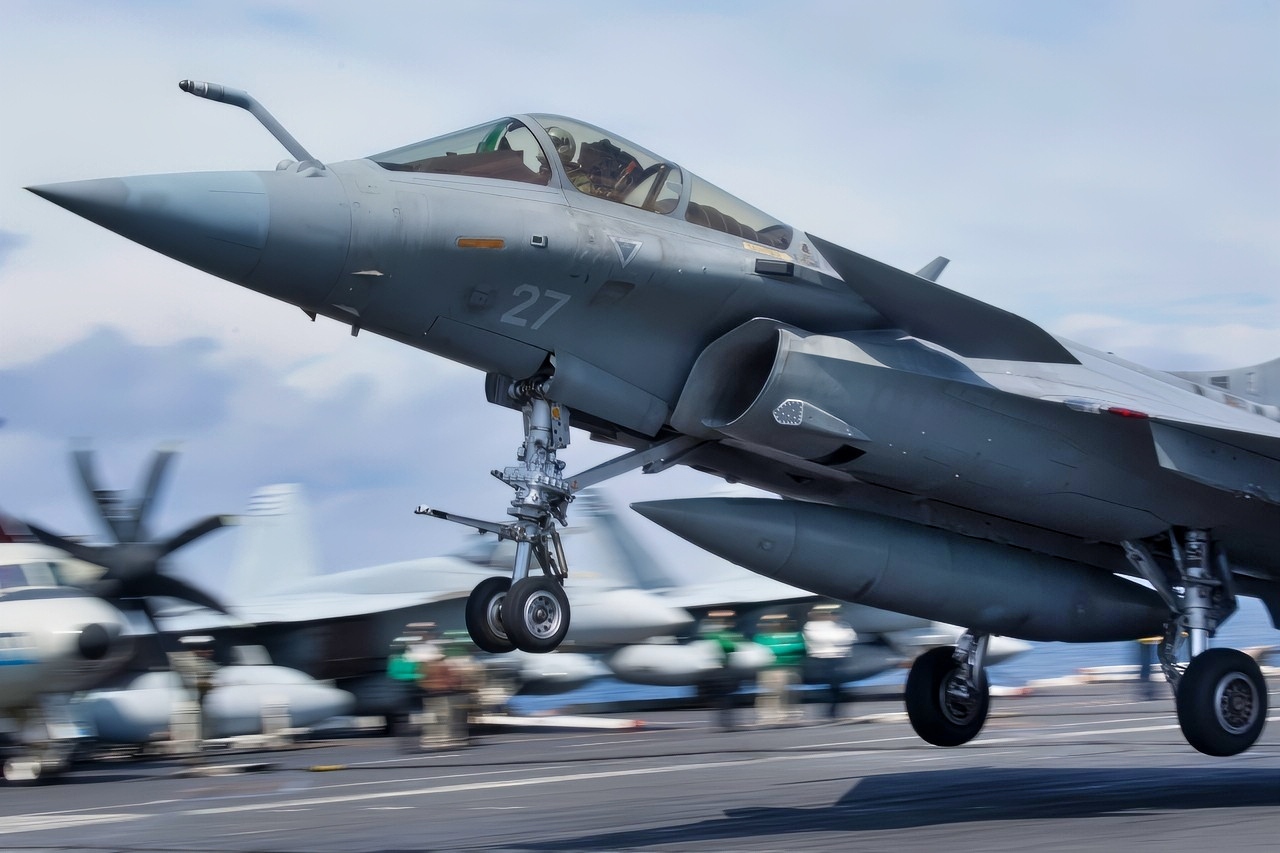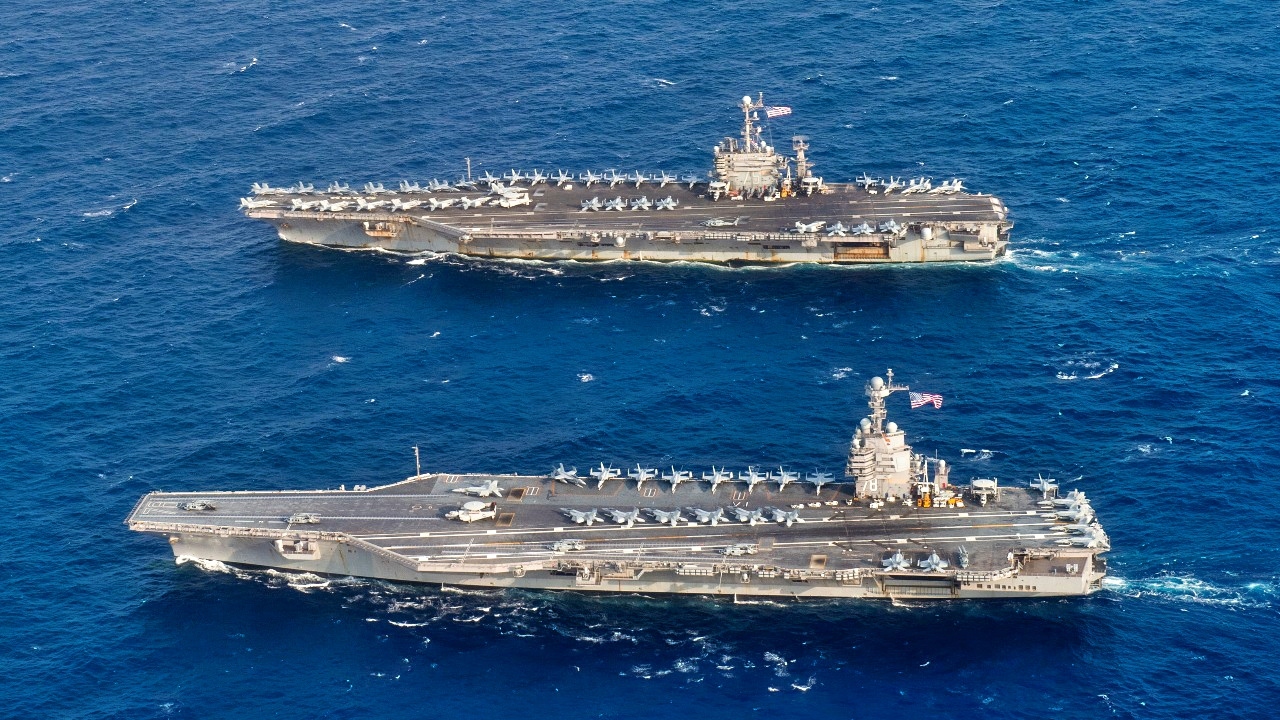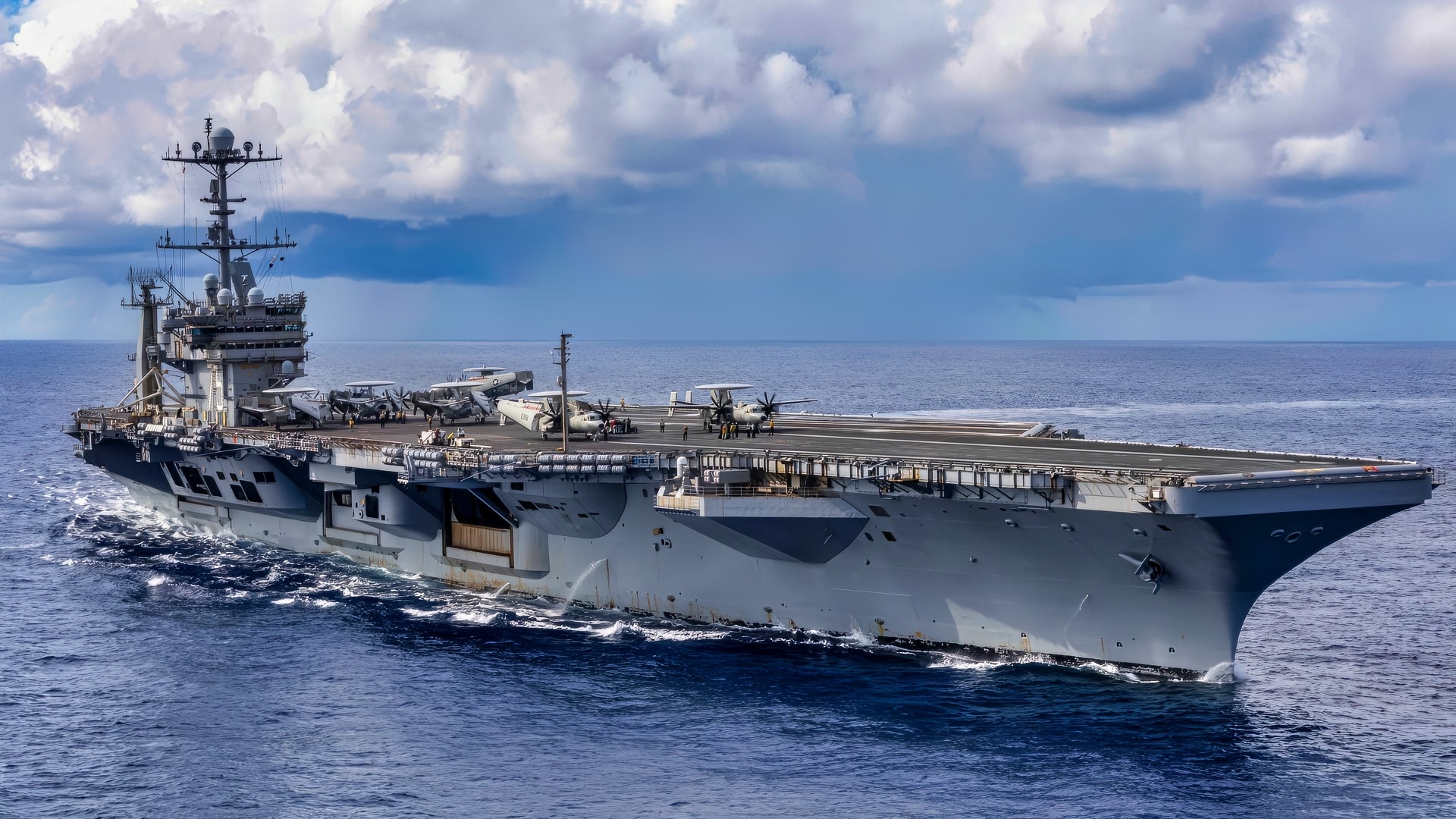Key Points and Summary – USS Harry S. Truman (CVN-75) is the eighth Nimitz-class, nuclear-powered supercarrier, commissioned in 1998 and renamed from “USS United States” in 1995.
-At 1,092 feet and 97,000 tons loaded, HST carries 90 aircraft and over 6,000 personnel, with two A4W reactors enabling 30+ knots and decades between refuelings.

(July 3, 2018) A French Dassault Rafale M Fighter touches down on the flight deck aboard the Nimitz-class aircraft carrier USS Harry S. Truman (CVN 75). Harry S. Truman is currently deployed as part of an ongoing rotation of U.S. forces supporting maritime security operations in international waters around the globe. (U.S. Navy photo by Mass Communication Specialist 3rd Class Rebekah A. Watkins/Released)
-Armed with Sea Sparrow/ESSM and Phalanx CIWS, Truman has flown major combat sorties: Southern Watch (2001), Iraqi Freedom (2003, 2007–08), Enduring Freedom (2004–05), and Inherent Resolve (2016) from the Mediterranean.
-As Ford-class carriers with EMALS arrive to replace Nimitz-class ships one-for-one, CVN-75 remains a core U.S. tool for power projection, sea control, and crisis response.
Aircraft Carrier Profile, USS Harry S. Truman, (CVN-75)
The Harry S. Truman (CVN-75) is the eighth Nimitz-class aircraft carrier of the United States Navy, named after the 33rd President of the United States, Harry S. Truman. The Truman is a nuclear-powered warship equipped to conduct a variety of missions, including power projection, crisis response, sea control, and counter-terrorism.
HST was authorized and laid down as USS United States, but her name was changed in February 1995 at the direction of then Secretary of the Navy John H. Dalton. The keel was laid by Newport News Shipbuilding and Drydock Company on November 29, 1993, and the ship was christened on September 7, 1996. The carrier was commissioned in 1998.
The Truman (also known as HST within the Navy) is 1,092 feet (333 m) long and 257 feet (78 m) wide, and is as high as a 24-story building, at 244 feet (74 m).
She has a flight deck of 4.5 acres in size, utilizing four elevators that are 3,880 sq ft (360 m²) each to transport planes between the flight deck and the hangar bay.
With a combat load, the HST displaces almost 97,000 tons and can accommodate 6,250 crewmembers when the air wings are present.
The warship uses two Mark II stockless anchors that came from USS Forrestal and weigh 30 tons each, with each link of the anchor chain weighing 360 pounds (160 kg).

The U.S. Navy Gerald R. Ford–class aircraft carrier USS Gerald R. Ford (CVN-78) and the Nimitz-class aircraft carrier USS Harry S. Truman (CVN-75) underway in the Atlantic Ocean on 4 June 2020, marking the first time a Gerald R. Ford–class and a Nimitz-class aircraft carrier operated together underway.
Armaments for the USS Harry S. Truman
She is equipped with three 20 mm Phalanx CIWS mounts and two Sea Sparrow SAM launchers. The supercarrier can accommodate around 90 aircraft, depending on the mission profiles.
Harry S. Truman cost over $4.5 billion in 2007 dollars to construct.
HST’s Nuclear Propulsion
The USS Harry S. Truman (CVN 75) is powered by two A4W nuclear reactors, which are pressurized water reactors that utilize highly enriched uranium. These reactors generate the immense power needed to propel the ship at over 30 knots (about 35 mph), drive its steam turbines and aircraft catapults, and provide electricity for all other systems.
Nuclear power plants enable the carrier to operate for extended periods, potentially more than 20 years, without needing to refuel, thereby granting it unmatched operational endurance.
The HST, like all the Nimitz-class supercarriers, supports America’s ability to sustain global operations for months, powered by twin nuclear reactors that provide virtually unlimited range. USS Harry S. Truman exemplifies the class—projecting power, protecting sea lanes, and aiding crises while hosting modern air wings that evolved from F-14s to F-18 Super Hornets, and F-35s, with the F/A-XX soon to be in production
USS Harry S. Truman History
The HST has conducted combat air operations several times in support of US national interests.
Operation Southern Watch (2001): The carrier transited the Suez Canal during the operation with Carrier Air Wing Three. She flew 869 combat sorties, including a strike on Iraqi integrated air defense system sites, in a sanctioned response to Iraqi surface-to-air missile fire against United Nations Security Council coalition forces.
Operation Iraqi Freedom (2002-2003 & 2007-2008): The USS Harry S. Truman (CVN 75) launched the first combat missions of Operation Iraqi Freedom in March 2003, dropping significant amounts of ordnance in support of ground forces and conducting extensive air combat missions.
The carrier’s crew achieved a record 89 consecutive days at sea without a port call, performing underway replenishments while simultaneously launching aircraft, a feat not accomplished since the Vietnam War.
Operation Enduring Freedom (2004-2005): The HST (CVN-75) participated in Operation Enduring Freedom in Afghanistan by supporting coalition forces with numerous combat sorties from the Arabian Sea, including the use of over 2.8 million pounds of ordnance during one deployment.
During these missions, the carrier’s air wing flew thousands of combat missions over several months.
Operation Inherent Resolve (2016): Carried out an eight-month air operation against ISIS from the Eastern Mediterranean. The Truman’s role was primarily to conduct “prompt and sustained combat actions from sea” to support the ongoing operations, delivering precision ordnance for close air support against dynamic targets on the ground.
The Truman and Other Nimitz Carriers To Be Replaced
The HST and other Nimitz-class carriers have been, and continue to be, the most powerful ships on the planet. However, they will soon be replaced. The newer carriers of the Ford class, also nuclear-powered, will replace the Nimitz-class carriers on a one-for-one basis as they become operational and incorporate a number of new technologies, including an Electromagnetic Aircraft Launch System (EALS), which replaces the Nimitz-class’ steam-powered catapults, as well as other efficiency measures that reduce crew burden.
About the Author: Steve Balestrieri
Steve Balestrieri is a National Security Columnist. He served as a US Army Special Forces NCO and Warrant Officer. In addition to writing on defense, he covers the NFL for PatsFans.com and is a member of the Pro Football Writers of America (PFWA). His work was regularly featured in many military publications.
More Military
China Claims New J-35 Stealth Fighter Has Radar Cross-Section ‘Smaller Than a Human Palm’
The SR-71 Blackbird Mach 3 Bomber?
5 Reasons A U.S.-China War Could Start










